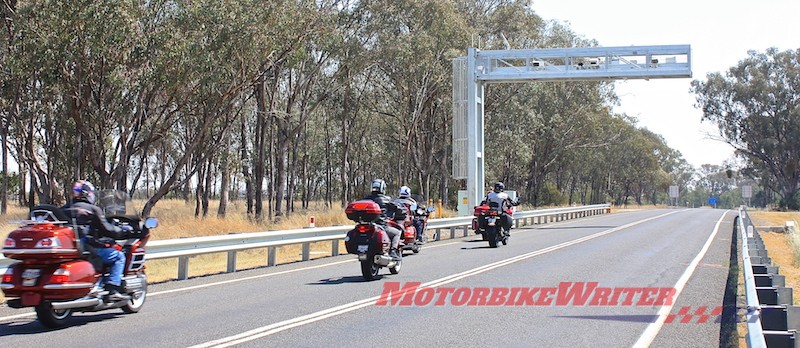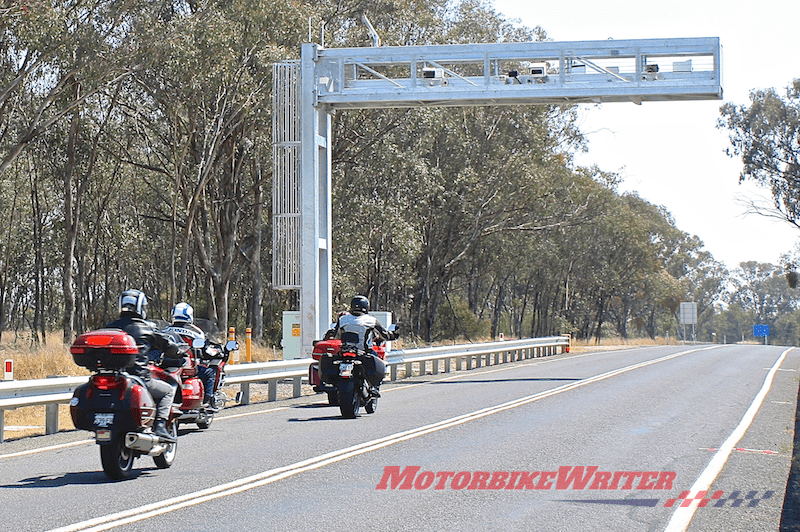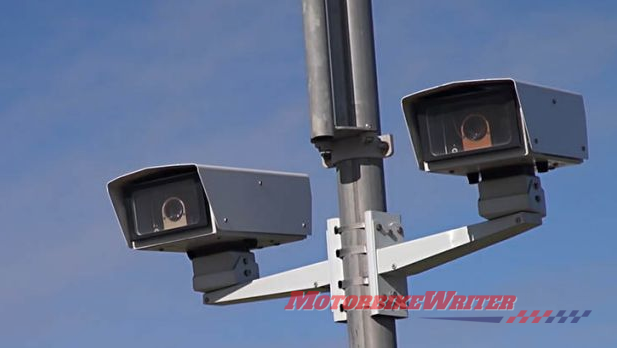Average speed or point-to-point cameras continue to increase their presence on our roads, but are they actually fairer than multiple speed cameras?
Some of these cameras are front facing, so motorcyclists evade detection, but most are rear facing.
The cameras are used in all states. However, in NSW (above photo near Inverell) they are only used to gauge the speed of heavy vehicles. That is because trucks represent 3% of road traffic yet are involved in 20% of fatalities.
Queensland is about to add three more average speed cameras to its arsenal on the Bruce and Mount Lindesay highways.
Tenders have been called for the new cameras to be installed along a 30km, 110km/h stretch of the Pacific Motorway, between Beenleigh and Gaven; 9km of the Gateway Motorway, between Nudgee and Deagon; and the 41km Toowoomba Second Range Crossing when it is completed.
How average cameras work
Average speed cameras record registration plates at fixed points on a section of road many kilometres apart. They then calculate the average speed between the two points.
If the stretch of road has roadworks, the cameras may be turned off or recalibrate to account for the lower speed limits.
They cost up $200,000 to buy and install. Of course, fine revenue easily pays for the cost!
Fair enforcement?
Many opinion polls have found most motorists believe mobile and fixed speed cameras are simply revenue collectors.
However, there seems to have been no public opinion polls conducted on average speed cameras.
Some believe they are actually fairer.
For example, one notorious 22km stretch of Old Cleveland Road in Brisbane has 19 approved camera sites. And there is no reason why many of them couldn’t be deployed at the one time!
So these cameras could theoretically fine motorists several times in the one stretch of road.
Whereas, point-to-point cameras only detect the one cumulative offence, often over a long stretch.
They also only fine the motorist for their average extra speed, not their maximum speed, which is a lower offence.
UPDATE: It has since been pointed out that average-speed cameras in Victoria and South Australia can issue up to three fines as the cameras are also fixed-speed cameras. So you could be fined for the average excessive speed and excessive speeds as you pass each camera.
Average speed cameras also detect motorists driving and riding unregistered or stolen vehicles, or unlicensed motorists. Mobile and fixed cameras do not have this functionality.
Various international and Australian studies have found average cameras significantly reduce the number of speeding motorists, crashes and fatalities.

Police presence preferred
RACQ technical and safety policy spokesman Steve Spalding says the cameras also monitor a greater stretch of road than a single speed camera.
However, it doesn’t stop some people riding or driving at ridiculous speeds and stopping for a cigarette break before the next set of cameras. It’s happened in Victoria.
“Of course our preference, as always, is that we see a visible police presence,” Steve says.
“Our members have repeatedly told us that over the years, they much prefer to see a police officer use a marked vehicle, not just for speeding, but for all of the other problem behaviours that we see on the road.”
Of course, there is also the case that all this overuse of speed detection devices in a country with speed limits set too low turns us into dangerous speedo gazers!
-
Tell us what you think! Leave your comments below.



